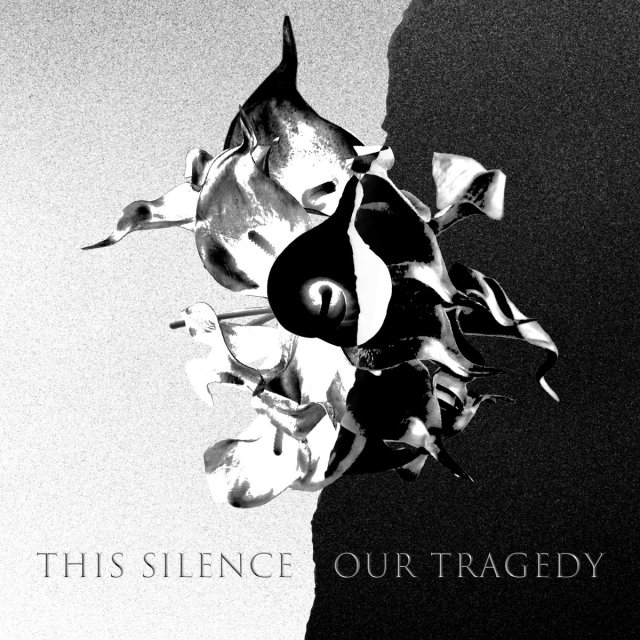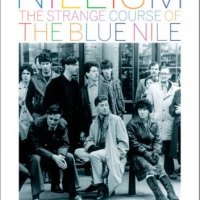As 1981 brought with it an entire cadre of Japan camp followers [the New Romantics] nipping at their heels, the band really had nothing to fear as by this time, they were ready to drop the booster stage that saw them perfecting the approach of Roxy Music coupled with a jazzy undercurrent that saw their music becoming incredibly complex, and leave earth’s atmosphere for deep space. The new album had a pair of singles as its harbinger.
 “The Art Of Parties” was the final single produced by John Punter, whose gleaming sound he brought to the table for Roxy Music was increasingly marginalized by the jazz-funk direction of Japan ca. 1981. As Eurosynth music by the New Romantics had, by 1981, gone mainstream, hipsters were, as ever, looking to jazz for discomfort. Club culture was increasingly looking to funk and jazz for inspiration. Japan were circling this target on their previous album, but now was the time for a commitment. “The Art Of Parties” sported the most complex polyrhythmic approach the band had taken thus far. The offbeats to the complex track were punctuated by stabs of Karn saxes that gave it a tremendous backbeat. Barbieri’s keyboards lent this program only the scant suggestions of melody; this cut was all about rhythm. Jansen’s drums played against his rhythm programming to build a sound that seems as if it would take three drummers to create it live.
“The Art Of Parties” was the final single produced by John Punter, whose gleaming sound he brought to the table for Roxy Music was increasingly marginalized by the jazz-funk direction of Japan ca. 1981. As Eurosynth music by the New Romantics had, by 1981, gone mainstream, hipsters were, as ever, looking to jazz for discomfort. Club culture was increasingly looking to funk and jazz for inspiration. Japan were circling this target on their previous album, but now was the time for a commitment. “The Art Of Parties” sported the most complex polyrhythmic approach the band had taken thus far. The offbeats to the complex track were punctuated by stabs of Karn saxes that gave it a tremendous backbeat. Barbieri’s keyboards lent this program only the scant suggestions of melody; this cut was all about rhythm. Jansen’s drums played against his rhythm programming to build a sound that seems as if it would take three drummers to create it live.
In a case of pearls before swine, the single failed to raise the band’s profile significantly above the #60 charting that their previous single, “Gentlemen Take Polaroids” had achieved the previous year. In a year that saw Japan clones Duran Duran effortless crash the UK top five with a sound hugely indebted to the band’s sound ca. “Quiet Life,” this must have caused the band some stress. The leap from the heavy-handed German label Hansa to the supportive Virgin label for “Gentlemen Take Polaroids” would need to show some ROI, eventually.
 The second single, “Visions Of China” should have corrected that problem. It was released in October, in immediate advance of the November album release of “Tin Drum,” but the track evidenced only incremental advancement on the #48 showing of “Parties” with the cut peaking at #32. This track was less frenzied than “Parties” with a stuttered rhythm track that achieved a more fluid complexity, with Karn’s fretless adding a sinuous hook coiling through the track with only spare interjections from the increasingly minimal synths of Barbieri [and Sylvian]. The breakdown during the intense middle eight drops out all other elements as the drum pattern holds down center stage with a fevered intensity. The blend of syn drums and acoustic percussion in an intense polyrhythmic cocktail. It all sounds complex, but airy. There is a lot of space in the mix and all of the elements have a lot more breathing room than on the more fervid moments on “Gentlemen Take Polaroids.”
The second single, “Visions Of China” should have corrected that problem. It was released in October, in immediate advance of the November album release of “Tin Drum,” but the track evidenced only incremental advancement on the #48 showing of “Parties” with the cut peaking at #32. This track was less frenzied than “Parties” with a stuttered rhythm track that achieved a more fluid complexity, with Karn’s fretless adding a sinuous hook coiling through the track with only spare interjections from the increasingly minimal synths of Barbieri [and Sylvian]. The breakdown during the intense middle eight drops out all other elements as the drum pattern holds down center stage with a fevered intensity. The blend of syn drums and acoustic percussion in an intense polyrhythmic cocktail. It all sounds complex, but airy. There is a lot of space in the mix and all of the elements have a lot more breathing room than on the more fervid moments on “Gentlemen Take Polaroids.”
 Strangely enough, it was the third single*, taken from the album four months after its release, that catapulted them in to the #5 position on the UK single chart. “Ghosts” still holds some sort of record as the least likely top five single ever. On it, the band parlayed their third and final effort at finding their muse within the framework that Erik Satie had laid down nearly a century earlier. But “Ghosts” is a much more atonal and jagged construction than were “The Tenant” and “Nightporter.” The track is punctuated by abstract, minor key synth and keyboard percussion, as the mournful Sylvian seems to be paralyzed by self-doubt and depression throughout the song. It absolutely boggles the mind that a track this prickly and distant was the one that finally attracted mass adulation. The only warmth on the cut comes from the marimba that echos a synth line and some harmonic synth drones that enter the song at its mid-point.
Strangely enough, it was the third single*, taken from the album four months after its release, that catapulted them in to the #5 position on the UK single chart. “Ghosts” still holds some sort of record as the least likely top five single ever. On it, the band parlayed their third and final effort at finding their muse within the framework that Erik Satie had laid down nearly a century earlier. But “Ghosts” is a much more atonal and jagged construction than were “The Tenant” and “Nightporter.” The track is punctuated by abstract, minor key synth and keyboard percussion, as the mournful Sylvian seems to be paralyzed by self-doubt and depression throughout the song. It absolutely boggles the mind that a track this prickly and distant was the one that finally attracted mass adulation. The only warmth on the cut comes from the marimba that echos a synth line and some harmonic synth drones that enter the song at its mid-point.
* Today, there would be no third single. Probably even no second one.
As with the previous two albums, “Tin Drum” was a program of eight cuts, but the timing came in under 40 minutes this time with only a single cut crossing the six minute mark around which Japan had seemed to be getting comfortable. The production helm had been passed from John Punter to another Roxy/Ferry alumnus, Steve Nye of Penguin Café Orchestra fame. Whereas Punter proffered a warm, deep gloss sound, Nye produced the album to have more space in the arrangements, with rhythm absolutely right up front and in the listener’s ear. The recording is arid and dry so that the percussive attack is palpably felt. Where synths had previously been used to glue the arrangements together on the previous two albums, here they were used sparingly, providing instead dissonant rhythmic bursts instead of melodic lead lines.
Nye produced the re-recorded album version of “The Art Of Parties,” and the new album track arrangement is more languid and flowing than the fussier single version. The backbeat horn hook of the single version had been completely removed as the track was re-thought to achieve a less contrived and more laidback funk pulse. The instrumental “Canton,” was the most melodic cut here, and it almost sounded like a throwback to a track off of Andy MacKay’s “Resolving Contradictions!” The sublime bass of Mick Karn carried this undulating instrumental forward with supple grace while the keyboards of Barbieri have a full layer of melody to achieve with Sylvian taking a breather.
Elsewhere, “Tin Drum” is the point where Japan eclipsed Roxy Music as an influence. This link to MacKay’s solo opus, remains a tenuous link to their past. “Tin Drum” didn’t really sound much like anything else out there at that point. Even the Eastern synthpop sound as evidenced by early Sakamoto/YMO didn’t sound this multi-ethnic. However, by 1988, Sakamoto’s sublime “Neo Geo” album comes off as the amazing sequel to “Tin Drum” for those who’ve not had the pleasure.
The album’s peak, for these ears, comes with the single track that stretches out to the seven minute mark. “Sons of Pioneers” is a track that Mick Karn received co-writing credit. It’s all elegant, languid slow-motion funk. The scant chords that reluctantly appear, serve only to heighten that magnificent bassline. The polyrhythmic drumming that typified most of the music here, was banished for this track, as it had been for “Ghosts.” The timing of Sylvian’s sparse lyrical interjections was devastating, even as he only entered the song after nearly two minutes. This was a typical of a defiantly adult elegance that owed nothing to the fleeting fancies of adolescence. This was a music that could see one to the end of one’s days with a dignified, if not ossified, air of contemplative maturity. Japan had reached a plateau all to themselves by this time, so naturally, intercine band strife [Karn’s girlfriend had made the transition to Sylvian at the time – always a band-slayer] served to break up the band at the height of their artistic and commercial success… but not before the two labels [Hansa and Virgin] cashed in.
Next: …Assemblage, or The Hits Just Keep On Comin’!







![Chris Cross: 1952-2024 [part 2]](https://postpunkmonk.files.wordpress.com/2024/04/ultravox-cross.jpg?w=200&h=200&crop=1)

![Forty Years Ago Today, Simple Minds Changed Everything with "New Gold Dream [81,82,83,84]"](https://postpunkmonk.files.wordpress.com/2022/09/new-gold-dream-in-spotlights.jpg?w=200&h=200&crop=1)


As much as I love Rain Tree Crow, Tin Drum was the all that the band ever really needed to finish with. I have to agree that this is some of the most mature, confident “pop” music ever made. Very few bands ever really outgrow, let alone out perform their influences. Japan does on Tin Drum. Here is a band that took stock of EVERYTHING they had accomplished up to this point and cut and pruned that musical tree into a magnificent aural topiary.
The Art Of Parties, in it’s album form, set the stage – this band no longer questions what it’s doing or where it’s sound is going. David Rhodes guitar is massive and the counterpoint rhythm structure Karn and Jansen achieve has rarely ever been bettered.
Ghosts is, for me one of the most breathtaking songs ever released. As much as it is filled with deep emotions, there is a mechanical, detatched air running through the verses that gives it a sort of madman’s musings quality. It has to have benefited – chartwise, by a public which just months before it’s release made Laurie Anderson’s O Superman a #2 UK hit. Oh how open minded the music buying public was 30 odd yrs ago.
Sons And Pioneers pushes the boundaries further than any other track on the album, gradually building the listener’s anticipation while exploring melody and rhythm that are far from Western.
For all the brilliance of the tracks I’ve just mentioned, its the album’s three pop tracks that give me the most thrill and caused me to have to buy a second import vinyl after wearing the first one out.
Here we have Japan applying all the discoveries of their career into 3 perfect pop songs.
Still Life In Mobile Homes is, first, one of the greatest song titles EVER. The track, after Ghosts, is the best evidence of the skill of producer Steve Nye to strip down the sound. This song just makes me dance around. I think it’s Sylvian’s most successful vocal performance on all of Japan’s albums. His delivery plays around and through the syncopated pop funk and synth treatements.
Vision Of China is a jazzy, slice of “Sino-Funk™” You just imagine Sylvian and his pals walking through the streets of a Chinese city enjoying life with a quick step to their gait.
Cantonese Boy is poppy and funky. Sylvian sounds free and easy. The band is a tight machine, prancing through the track like a proud thoroughbred.
There is no filler here. No tracks you wish sounded different. Tin Drum is rare in that it is a perfect album.
LikeLike
At the time, Japan was a group I dropped in and out of, hearing singles rather than albums. I came to “Gentlemen Take Polaroids” from the legendary “Cash Cow” and that sealed the deal and I started picking up their albums. “Tin Drum” is an album that always leaps to mind when I think of albums that are coherent whole works of art rather than just a collection of songs that document a period in an artist’s life. It’s been far too long since I last listened to it …
LikeLike
*Almost* perfect album. For a band who call themselves Japan to put three songs about China on the same record, and to even put Mao on the front *and back* covers (not to mention their pasty-white, ultra-Western wealthy-looking and effeminate lead singer eating a bowl of rice in a hovel) smacks to me of trying too hard to make a point that never really happens. It’s like a concept album whose theme was aborted halfway through.
That said, this record is in my personal top twenty (maybe my top ten) pop records of all time, but I could still do without the heavy-handedness of the empty Asian imagery. I’d pull Mao off of the cover, and completely dump the song Canton. It’s the weakest track on the record, and it sounds unfinished. The melody is repetitive, it goes nowhere, and it sounds too hard like Japan were trying to write a theme song for the Beijing olympic games that happened so many years into their future. Swap in the b-side Life without Buildings, and there is perfection for ya’.
(The other seven tracks are flawless and still amaze me after thirty years).
LikeLike
JT – A provocative premise, sir. You’re right, “Canton” is repetitive, but that’s because all of the song’s space was given to Karn’s miraculous, fluid bass line. But I agree that “Life Without Buildings” might fit the overall album even better, though I find that track to be unfinished sounding, right down to the tentative Sylvian vocal which sounds sketchy as compared to his equally brief, but fully formed appearance in “Burning Bridges.” And has anyone mentioned it before, but what does the Günter Grass title have to do with China?! That’s the conceptual elephant in the room for me!
LikeLike
Yes, the title has always interested me. I won’t fault the imagery or lack of follow through conceptually, basically because NONE of Japan’s album covers or imagery has ever done the music justice. I always kind of read the album cover as being self-deprecating – Anglo English School Boys flirting with Asian sounds in a pop format.
I will disagree about Canton. It should be appreciated for it’s straightforward repetition. It’s an instrumental meditation for me.
I love Life Without Buildings and it fits as a pre-album John Punter track. Not sure I would want to hear what Steve Nye did with the track though. I tend to be a bit hard on Steve Nye because some of his Japan production is slicker than I would like. His work with Sylvian on his first three solo albums would be the work of his I most appreciate.
LikeLike
Echorich – Good point on Nye. Maybe that’s why they retreated to Punter for the next album in our series…
LikeLike